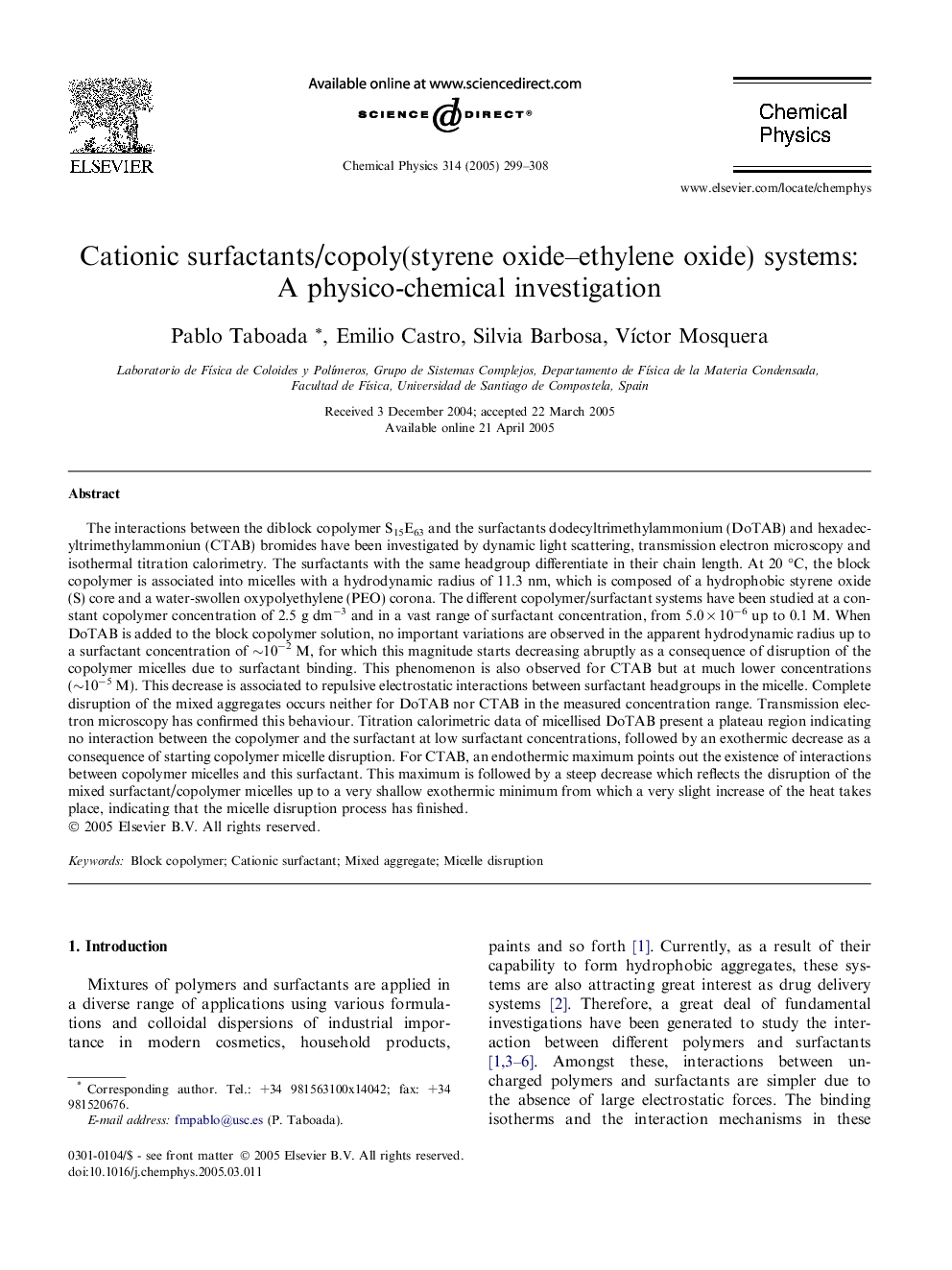| کد مقاله | کد نشریه | سال انتشار | مقاله انگلیسی | نسخه تمام متن |
|---|---|---|---|---|
| 9575320 | 1504345 | 2005 | 10 صفحه PDF | دانلود رایگان |
عنوان انگلیسی مقاله ISI
Cationic surfactants/copoly(styrene oxide-ethylene oxide) systems: A physico-chemical investigation
دانلود مقاله + سفارش ترجمه
دانلود مقاله ISI انگلیسی
رایگان برای ایرانیان
موضوعات مرتبط
مهندسی و علوم پایه
شیمی
شیمی تئوریک و عملی
پیش نمایش صفحه اول مقاله

چکیده انگلیسی
The interactions between the diblock copolymer S15E63 and the surfactants dodecyltrimethylammonium (DoTAB) and hexadecyltrimethylammoniun (CTAB) bromides have been investigated by dynamic light scattering, transmission electron microscopy and isothermal titration calorimetry. The surfactants with the same headgroup differentiate in their chain length. At 20 °C, the block copolymer is associated into micelles with a hydrodynamic radius of 11.3 nm, which is composed of a hydrophobic styrene oxide (S) core and a water-swollen oxypolyethylene (PEO) corona. The different copolymer/surfactant systems have been studied at a constant copolymer concentration of 2.5 g dmâ3 and in a vast range of surfactant concentration, from 5.0 Ã 10â6 up to 0.1 M. When DoTAB is added to the block copolymer solution, no important variations are observed in the apparent hydrodynamic radius up to a surfactant concentration of â¼10â2 M, for which this magnitude starts decreasing abruptly as a consequence of disruption of the copolymer micelles due to surfactant binding. This phenomenon is also observed for CTAB but at much lower concentrations (â¼10â5 M). This decrease is associated to repulsive electrostatic interactions between surfactant headgroups in the micelle. Complete disruption of the mixed aggregates occurs neither for DoTAB nor CTAB in the measured concentration range. Transmission electron microscopy has confirmed this behaviour. Titration calorimetric data of micellised DoTAB present a plateau region indicating no interaction between the copolymer and the surfactant at low surfactant concentrations, followed by an exothermic decrease as a consequence of starting copolymer micelle disruption. For CTAB, an endothermic maximum points out the existence of interactions between copolymer micelles and this surfactant. This maximum is followed by a steep decrease which reflects the disruption of the mixed surfactant/copolymer micelles up to a very shallow exothermic minimum from which a very slight increase of the heat takes place, indicating that the micelle disruption process has finished.
ناشر
Database: Elsevier - ScienceDirect (ساینس دایرکت)
Journal: Chemical Physics - Volume 314, Issues 1â3, 18 July 2005, Pages 299-308
Journal: Chemical Physics - Volume 314, Issues 1â3, 18 July 2005, Pages 299-308
نویسندگان
Pablo Taboada, Emilio Castro, Silvia Barbosa, VÃctor Mosquera,